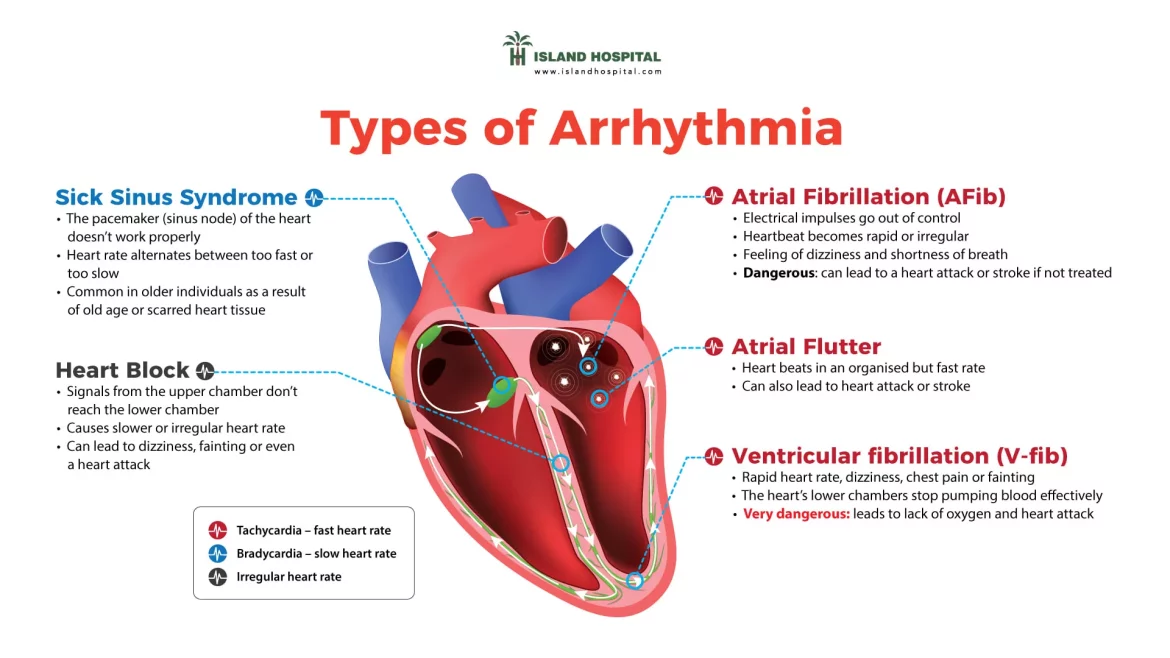Atrial fibrillation (AFib) is a type of heart condition that falls under the broader category of arrhythmias. To fully understand whether AFib is considered an arrhythmia, it is essential to explore the definitions, types, and mechanisms of both AFib and arrhythmias. This article will delve into the specifics of AFib, its classification as an arrhythmia, the underlying causes, symptoms, and treatment options.
What Is An Arrhythmia?
An arrhythmia is a disorder of the heart rate or rhythm. This means the heart can beat too fast, too slow, or with an irregular pattern. Normal heartbeats originate from the sinoatrial (SA) node, the natural pacemaker of the heart, which sends electrical impulses causing the heart to contract and pump blood. When these electrical impulses do not work properly, arrhythmias can occur.
Arrhythmias can be broadly categorized into:
Bradycardia: A slower than normal heart rate.
Tachycardia: A faster than normal heart rate.
Premature contractions: Early heartbeats originating from the atria (premature atrial contractions) or ventricles (premature ventricular contractions).
Fibrillation: Disorganized electrical signals causing rapid and irregular heartbeats.
Types of Arrhythmias
Arrhythmias can originate from different parts of the heart and can be classified based on their location and mechanism:
Atrial Arrhythmias: Originating in the atria, the upper chambers of the heart.
Ventricular Arrhythmias: Originating in the ventricles, the lower chambers of the heart.
Supraventricular Arrhythmias: Starting above the ventricles, typically in the atria or AV node.
Ventricular Fibrillation: A severe form of arrhythmia originating in the ventricles, leading to ineffective blood pumping.
What Is Atrial Fibrillation?
Atrial fibrillation is a specific type of supraventricular arrhythmia characterized by rapid and irregular beating of the atria.
In AFib, the atria quiver instead of contracting effectively, leading to a disorganized and irregular heart rhythm. This can result in poor blood flow to the rest of the body and can cause blood to pool in the atria, increasing the risk of clot formation and subsequent stroke.
Classification of Atrial Fibrillation
AFib can be classified based on its duration and frequency:
Paroxysmal AFib: Episodes that start suddenly and end on their own within 7 days.
Persistent AFib: Episodes that last longer than 7 days and may require medical intervention to terminate.
Long-standing Persistent AFib: Continuous AFib lasting more than 12 months.
Permanent AFib: When both the patient and doctor decide to cease attempts to restore normal rhythm.
Is AFib Considered An Arrhythmia?
Yes, atrial fibrillation is unequivocally considered an arrhythmia. It falls under the category of supraventricular arrhythmias due to its origin in the atria. AFib disrupts the normal sinus rhythm, causing the heart to beat irregularly and often rapidly.
The hallmark of AFib is the chaotic electrical activity in the atria, leading to an irregular and often rapid ventricular response.
Causes of Atrial Fibrillation
Various factors can contribute to the development of atrial fibrillation, including:
Hypertension: High blood pressure can cause structural changes in the heart, leading to AFib.
Coronary artery disease: Blockages in the coronary arteries can affect heart function and lead to arrhythmias.
Heart valve disease: Abnormalities in the heart valves can disrupt normal blood flow and lead to AFib.
Congenital heart defects: Structural heart problems present from birth can predispose individuals to AFib.
Thyroid disorders: Both hyperthyroidism and hypothyroidism can increase the risk of AFib.
Sleep apnea: This condition can lead to intermittent oxygen deprivation, increasing the risk of arrhythmias.
Alcohol and stimulant use: Excessive consumption of alcohol, caffeine, or other stimulants can trigger AFib episodes.
Stress and anxiety: Emotional and physical stress can precipitate AFib.
Diagnosis of Atrial Fibrillation
Diagnosing AFib involves a combination of patient history, physical examination, and diagnostic tests. The following tests are commonly used:
Electrocardiogram (ECG): A primary tool for diagnosing AFib by recording the electrical activity of the heart.
Holter monitor: A portable ECG device worn for 24 to 48 hours to capture intermittent episodes of AFib.
Event recorder: Similar to a Holter monitor, but worn for a longer period to record irregular episodes.
Echocardiogram: An ultrasound of the heart to assess its structure and function.
Blood tests: To check for underlying conditions like thyroid disorders or electrolyte imbalances.
Stress test: To evaluate the heart’s response to physical exertion.
Treatment of Atrial Fibrillation
The treatment goals for AFib are to control the heart rate, restore normal rhythm, prevent blood clots, and manage underlying conditions. Treatment options include:
Medications
Rate control medications: Beta-blockers, calcium channel blockers, and digoxin to control heart rate.
Rhythm control medications: Antiarrhythmic drugs like amiodarone, sotalol, and flecainide to restore and maintain normal rhythm.
Anticoagulants: Warfarin, dabigatran, rivaroxaban, and apixaban to prevent blood clots and reduce stroke risk.
Non-surgical Procedures
Electrical cardioversion: A procedure where a controlled electric shock is delivered to restore normal rhythm.
Catheter ablation: A minimally invasive procedure that uses radiofrequency energy to destroy small areas of heart tissue causing AFib.
Surgical Options
Maze procedure: A surgical technique that creates scar tissue in the heart to block abnormal electrical signals.
Left atrial appendage closure: A procedure to close off the left atrial appendage, where blood clots commonly form in AFib patients.
Conclusion
Atrial fibrillation is undoubtedly considered an arrhythmia. It is one of the most common types of supraventricular arrhythmias, characterized by rapid and irregular beating of the atria. Understanding AFib, its causes, symptoms, diagnosis, and treatment options is crucial for effective management and reducing the risk of complications. By recognizing AFib as an arrhythmia and adopting appropriate lifestyle changes and medical treatments, individuals can lead healthier lives and minimize the impact of this condition on their overall well-being.

